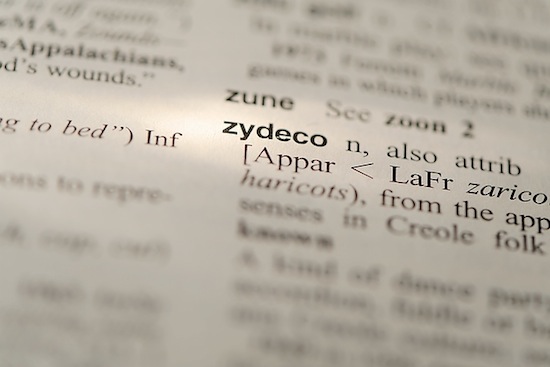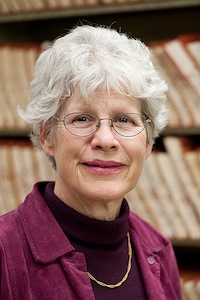‘Z’ is not the end for Dictionary of American Regional English

The final entry in the SI-Z volume of the Dictionary of American Regional English.
Photo: Jeff Miller
The Dictionary of American Regional English has reached the end of the alphabet, but ‘Z’ is not the end of the road for the definitive source on American speech.
Chief Editor Joan Hall says the dictionary known as DARE still has more to accomplish. The dynamic nature of language means that updating the dictionary is an ongoing effort; the first volume, covering A to C, was published nearly 30 years ago.
But in recent months, DARE has faced a shortfall that could keep it from continuing to pursue its vital work. A grant from the National Endowment for the Humanities was $50,000 less than anticipated due to the federal budget sequester, private gifts have steeply declined, and a major foundation that for 20 years provided a large annual gift has moved on to other projects.
“For over 50 years we’ve had a remarkable collaboration among the federal government, private foundations, corporations, the UW and literally hundreds of individuals who simply love language,” Hall says. “It’s getting harder and harder for all parts of this puzzle to continue to support us as they have in the past.”
Later this month, Hall will meet with the DARE Board of Visitors to discuss the plan and DARE’s financial future. Hall and her staff are working to develop a new business plan in hopes of attracting new donors to the project, with the help of the UW–Madison College of Letters & Science.
“UW-Madison has been generous over the years and we’re hopeful they can find ways to help,” Hall says.
Hall says a digital edition of DARE launching this fall from Harvard University Press has the potential to win the dictionary more supporters. It will include a state-of-the-art search function, browsing by region as well as alphabetically, audio of original DARE field recordings, and will allow users to dig into the data to make maps and find out more about the survey respondents who said particular words and phrases.
Ben Zimmer, language columnist for the Boston Globe, is already a fan. “When the digital version of the Dictionary of American Regional English launches, I’m sure I’ll have a tab devoted to it,” Zimmer wrote recently.
In 2012, DARE published its fifth volume, covering SI to Z, and in 2013 it released a companion volume that includes lists of answers to more than 400 of the questions posed by UW–Madison researchers who conducted interviews in more than 1,000 communities across the country. After the original fieldwork, editors in Madison spent four decades studying the more than 2.3 million responses, capturing the diversity and richness of the American language, from Adam’s housecat (an expression, “he wouldn’t know me from Adam’s housecat”) to zydeco (a kind of dance music associated with Louisiana Creole culture).
Later this year, DARE will use the NEH grant to return to the original 22 Wisconsin communities where it first did its fieldwork. The survey will also be carried out in 17 other communities in the state (chosen to reflect the demographics of the 2010 Census) and will be open to anyone else in Wisconsin who wants to answer the dictionary’s extensive questionnaire.
The pilot study will use an online survey rather than face-to-face interviews to trace in what ways language has changed, or stayed the same, since the first round of fieldwork was done in the 1960s.
Hall says those who want to contribute can visit DARE’s website and click the “donate” button.
“Zydeco is not the end,” Hall says.
For more information, examples of regional terms, quizzes, photos, audio and other resources, visit dare.news.wisc.edu.





